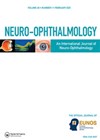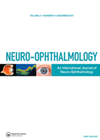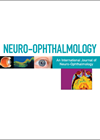
Journal Reviews
How does teprotumumab impact on ocular misalignment in thyroid eye disease?
A retrospective case review was conducted with the aim of exploring the effect of teprotumumab on objective diplopia. Adults diagnosed with thyroid eye disease, presenting with diplopia and receiving a standard six-month treatment with teprotumumab at a single centre were...
Primary visual pathway changes in individuals with chronic mild traumatic brain injury
Patients with mild traumatic brain injury (mTBI) often self-report vision disturbance despite showing no reduction of visual acuity or fundus examination abnormality. This prospective, observational, cross-sectional study aimed to determine if using a sweeping array of investigations can help diagnose...
Avoiding prominent facial features during perimetry
The authors present a case series including six healthy participants prospectively recruited. All participants had no ocular pathology. The assessment included identification of their dominant eye for use in testing. A 60-4 SITA standard visual field assessment was completed in...
Current literature evidence for fulminant idiopathic intracranial hypertension
Fulminant idiopathic intracranial hypertension (IIH) is a rapid vision-degrading presentation of IIH with limited published studies. This narrative review aims to collate current knowledge around fulminant IIH presentation and visual outcomes. Search terms included IIH, benign intracranial hypertension, or pseudo-tumour...
How common is empty sella in neuro-ophthalmology patients not suspected of raised intracranial pressure
The study aimed to assess how common the presence of empty / partially empty sella is amongst neuro-ophthalmology patients undergoing magnetic resonance imaging (MRI) excluding for papilledema and raised intracranial pressure (ICP). The study retrospectively reviewed case records of consecutive...
Predicting visual prognosis of patients with methanol poisoning
Symptoms of methanol poisoning often occur 12–24 hours after oral consumption, and visual symptoms are seen in approximately 50% of cases. This study aims to investigate the role of optic nerve diffusion status on cranio-orbital magnetic resonance imaging (MRI) in...
Does modern radiological imaging detect lesions associated with internuclear ophthalmoplegia?
The authors present a retrospective case review including all patients with a diagnosis of internuclear ophthalmoplegia (INO) presenting to two tertiary neuro-ophthalmology centres over a five-year period. The aim of the study was to assess the sensitivity of modern radiological...
What are the characteristics of patients reporting diplopia in giant cell arteritis?
The authors present a retrospective study of individuals diagnosed with giant cell arteritis (GCA) consecutively over a six-year period at a single tertiary ophthalmic centre. The characteristics of binocular diplopia prior to GCA diagnosis was collected from medical records and...
Comparing retinal thickness in Parkinson’s disease, essential tremor and healthy controls
This study aimed to compare retinal findings in chronic essential tremor (ET), early Parkinson’s disease (PD) and healthy controls. Those recruited with ET had to have received a diagnosis a minimum of three years previous and those with PD had...
Predicting outcome for visual acuity in optic neuritis associated with multiple sclerosis
The authors present a retrospective cohort study to evaluate key predictors of long-term high-contrast visual acuity following optic neuritis associated with multiple sclerosis. All patients coded as optic neuropathy and assessed by a neuro-ophthalmologist over a 10-year period were screened...
Acromegaly associated with enlargement of extraocular recti muscles
This retrospective case review aimed to evaluate the frequency and extent of extraocular muscle enlargement in cases of acromegaly at presentation. All new presentations of acromegaly diagnosis at a single tertiary centre over a five-year period were screened for inclusion....
Could idebenone by the solution for treating dominant optic atrophy?
Dominant optic atrophy (DOA) is a disease of the retinal ganglion cells, with no current treatment options. In most cases, DOA is caused by a mutation in the OPA1 gene. The aim of this study was to evaluate the effect...













